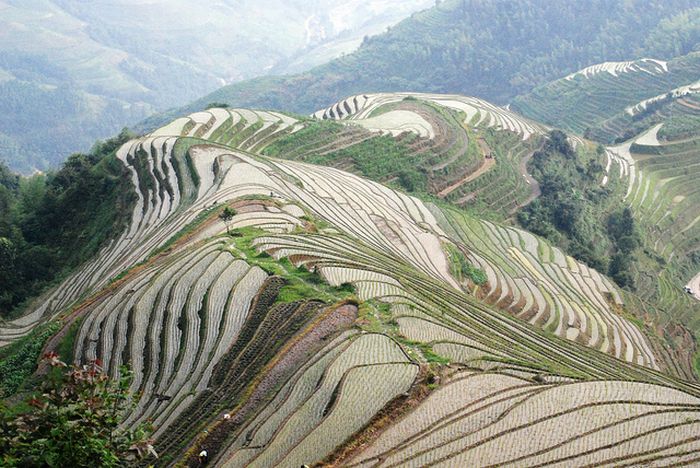|
|
Paddy Fields, Rice Terraces
|
Mumun Period rice farmers used all of the elements that are present in today's paddy fields such terracing, bunds, canals, and small reservoirs. We can grasp some paddy-field farming techniques of the Middle Mumun (c. 850-550 BC) from the well-preserved wooden tools excavated from archaeological rice fields at the Majeon-ni Site. However, iron tools for paddy-field farming were not introduced until sometime after 200 BC. The spatial scale of paddy-fields increased with the regular use of iron tools in the Three Kingdoms of Korea Period (c. AD 300/400-668).
The first paddy fields in Japan date to the Early Yayoi period. The Early Yayoi has been re-dated and thus it appears that wet-field agriculture developed at approximately the same time as in the Korean peninsula.
In the Philippines, the use of rice paddies can be traced to prehistoric times, as evidenced in the names of towns such as Pila, Laguna, whose name can be traced to the straight mounds of dirt that form the boundaries of the rice paddy, or "Pilapil."
Wet rice cultivation in Vietnam dates back to the Neolithic Hoa Binh culture and Bac Son culture.
|
|









